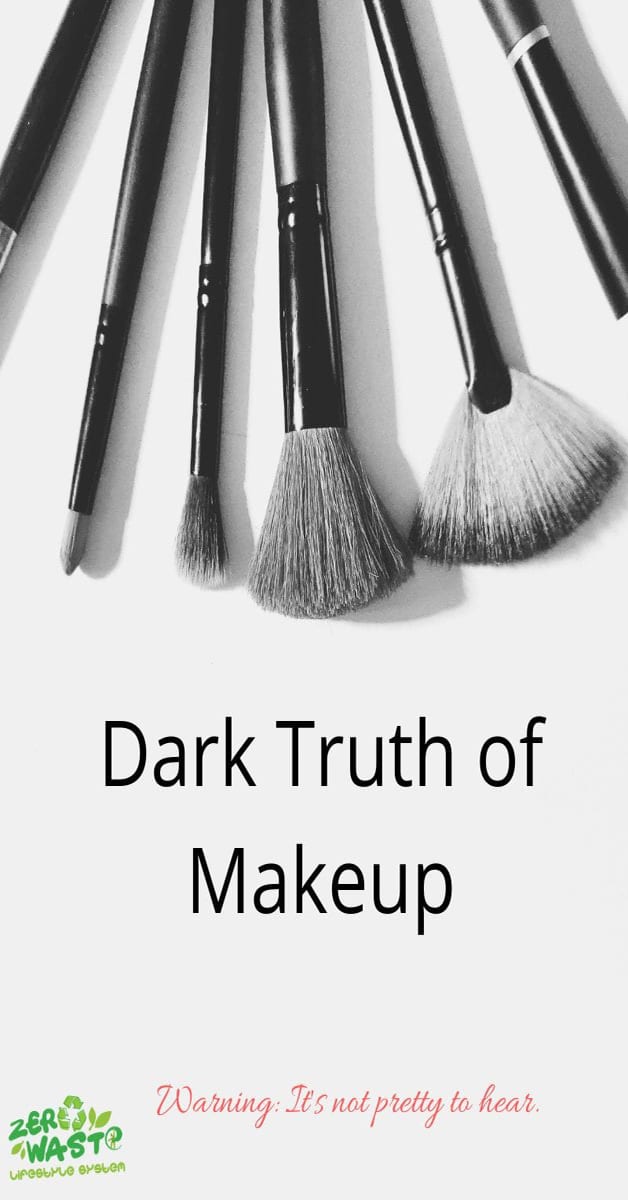Try to observe the people around you. You may agree that almost everyone wears makeup. Almost people of gender and ages can be considered as its consumers. Why is makeup that important?

Over the years, people see makeup not just as a form of aesthetics but also an expression of one’s self. At some point, it shows who a person is. The colors you choose to adorn your head to toe serve as your identity.
Makeup is a form of art. There are people who are more confident expressing themselves with makeup. They can play with colors and textures as if their face and body are their canvas. They consider this as their form of expression and a talent unique to themselves. Truly, they are amazing because of that.
Moreover, makeup has now become a tool to enhance someone’s personality. It does not only show the beauty of someone, it can further boost the inner and outer self. We cannot deny the fact that makeup is now a strong source of confidence and self-esteem and is an effective tool to stay attractive and young. Indeed, makeup has helped humanity in various ways.
Dark Truth about Makeup
Makeup is a tool for beautification but it hides grim implications behind its pretty façade. Here are the dark truths you must know before buying another makeup item.
Controversial Origins of Makeup
People are starting to be more responsible consumers by trying products that are vegan and cruelty free. However, this solution cannot totally remove ugly smudges of makeup origin. Even if not tested on animals, vulnerabilities can still be observe such as child labor and underrate wages. Let’s take as an example the sourcing of a famous makeup ingredient, mica.
Mica refers to a group of silicate minerals known as sheet silicates distinct for its sheet-like layers. It usually looks pearly and is relatively soft and light. It has as many as 37 different types which varies from silver to black.
This lustrous mineral is commonly used in cosmetics. This is an important ingredient which provides shimmer to your eyeshadow, lipsticks, highlighter and more. However, even though mica is known to the makeup industry, most of its consumers are blind to how this mineral is generated.
A documentary exposed the dark truth of how this makeup ingredient is mined in India. The country is known as the primary source of mica all over the world. However, these mines have long been the site of abuses and human rights violation.
In the said documentary, it was revealed that children work in the mines as early as four years old. Many have not left since that young age. They sacrificed their education just to provide food for the family. Even so, the salary they receive does not fairly represent their hard-work. What’s worst, their lives are in danger.
After the British occupation, there have been a record of 700 mines with 20,000 workers on it. Most of the population are children. They do not wear safety gears, nor do they have proper tools for mining. This accounted for 10 to 20 deaths a month. Though contractors are willing to give compensation for the demise, the unsafe practices still remains.
Overall, the origin of makeup is a perfect definition of unjust wages, illegal and unsafe practices, and child-labor.
Should we still feel pretty after learning these ugly truths?
Dangers in Using Makeup
Aside from the macro effects of makeup origins, the use of it has a personal setback. The makeups we use every day are made from various chemicals that should not be usually applied to your skin. While the cosmetics industry willingly cooperate to put minimal to no amount of toxic substances in their products for “safety” of consumers, continuous use of these still has serious health impacts.
One of the most controversial chemicals found in cosmetics is formaldehyde. This substance is usually used in treating a corpse, and people may not be surprised with that. This also causes cancer, especially if inhaled in large amounts for long periods of time. However, formaldehyde is used as a makeup preservative. It is also an effective agent to keep bacteria contamination away. While specific brands follow laws such as the Proposition 65 [which sets the reasonable amount of toxic chemicals in products], continuous use may open to cancer or birth defects, if pregnant. This is especially true to people who have long exposure to the products with this chemical such as manicurists.
Other substances may penetrate the skin and enter the bloodstream. Pressed or loose powder has an element called titanium dioxide which can enter the body through this process and can reach as far as the brain, causing nerve damage and possible cancer. Meanwhile, substances such as carbon black found in eyeliner and mascara, is responsible for the dark pigmentation of the cosmetics. However, they may bring damage to the respiratory system and can cause cancer as well.
How to Buy Makeup Sustainably
We can choose not to give up makeup and still live responsively and sustainably. It entails extra effort on your part but doing so is an act of opposing to cruel origins of makeup.
- Choose vegan and cruelty-free products.
If you are already looking for vegan and cruelty-free products to replace your stuff, then you are having a great start. But do not forget to do little researches on ethical ingredient sourcing and policies to make sure that the products you buy are really cruelty-free, both on animals and humans.
2. Choose reusable makeup tools.
Consumers use makeup tools at a daily basis. This makes application easier and better. So when buying this stuff, make sure that they can be reused and washed. Buying products made from organic materials such as bamboo fibers is a plus.
3. Avoid one-use products.
Some makeup tools and products have one-time use. What’s even more alarming is that their packaging or the products themselves are not made with easily degradable materials. Some of these cosmetics you have to reconsider purchasing are face sheet masks and wipes.
3. Try zero waste makeup brands.
With the demand to choose green living, more and more brands step up to inspire people to love the environment by being sustainable. This includes brands such as Lush cosmetics.
4. Do it yourself.
Some makeup can be made from ingredients found at home. For instance, you can make your own body scrubs from special salts and orange peels, or DIY lip scrubs from sugar and olive oil. You will not feel guilty thinking how things are made because you prepared it. It will save your money as well.
Conclusion
Makeup is now part of our daily routine. It is always associated to beauty. However, with responsible and sustainable choice of the products we put on our skin, we show that we are not just after the aesthetics of the surface. We also seek to reflect the beauty to our only home.





I love makeup. But now that I’m in my 30’s I invest more on skincare.
But, I can’t go out without lipstick and eyebrows on.
Aaand, I never buy fake makeup.
It’s a risk I’m not willing to take.
knowing all those dark facts was so painful. It’s so bad that so many beauty brands don’t care about anything but selling more products.
your suggestions were amazing. I’m strongly looking to buying more zero-waste products.
I believe that it is SO important to be aware of any products that we are putting on or near our bodies, and makeup is no exception. By understanding the ingredients and the potential risks, it is then on each of us individually to find products that we are comfortable with or to avoid using makeup altogether. Thank you for pulling back the curtain for those who may be unaware.
This was really informative. As someone who is trying to cut back on waste, I look at my makeup tubes and containers and cringe. To hear the other terrible truths about these products, I will definitely take this into consideration the next time i shop for makeup.
This is a lot of really interesting information. I believe I saw the documentary that you reference and it really is shocking to see how far-reaching and impactful consumer behaviors can be. Thank you for sharing!
Amazing, this article was so much informative, thanks for sharing it.